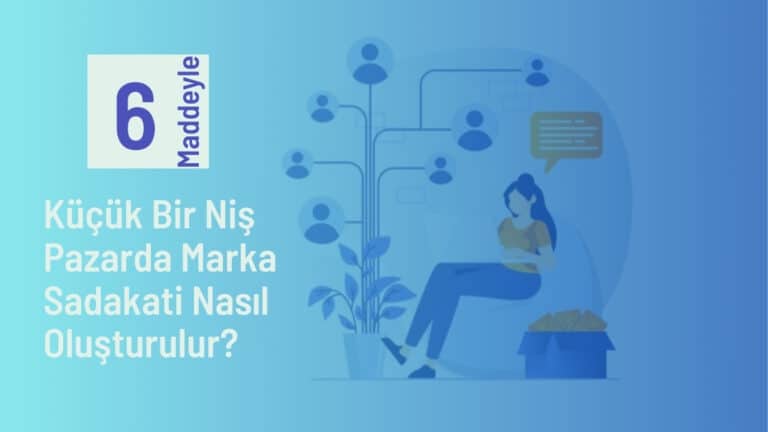
Productive AI has become one of the most exciting areas of technology in recent years. However, to maximize the potential of these powerful engines, it is critical to use the right optimization techniques. This comprehensive guide provides an in-depth look at the technical aspects and methodologies of optimizing generative AI engines. Starting from the basic concepts of generative models, we will explore various optimization techniques, performance monitoring methods, and quality control measures. We will touch on both practical implementation strategies and theoretical frameworks, addressing common challenges and future developments in the field. Computational efficiency, output quality, and balancing performance and resource utilization will be the cornerstones of this guide. If you are ready, let's take a deep dive into the world of productive AI!
Understanding Artificial Intelligence Models
AI models can not only make sense of data, but also create entirely new content from it. Understanding how these engines work is the first step to optimizing them more effectively. How do these systems work? Basically, they learn from large-scale data sets and use the patterns they have learned to produce outputs such as text, images or audio.
AI engines usually consist of two main components: giriş məlumatları and model architecture.The input data is the raw material from which the engine learns, while the model architecture is the algorithm that processes this data and produces results. For example, a language model learns from data sets containing billions of words and then builds meaningful sentences based on this learning The key characteristics of a successful AI model are:
- High quality data: The data set used in the learning process is clean and accurate.
- Optimization: Correct setting of model parameters.
- Fast processing capacity: Ability to perform complex calculations quickly.
One of the methods used to improve the performance of these engines is hyperparameter optimization. This process involves optimally adjusting the model's learning rate, the number of layers or activation functions. The following table summarizes some of the parameters commonly used in hyperparameter optimization and their effects:
| Parametre | Description | Etkisi |
|---|---|---|
| Learning Speed | Rate at which the model learns from the data set | Çok hızlı ayar, düşük doğruluk |
| Number of Layers | Depth of the model | More layers, more complex learning |
| Batch Size | Amount of data processed in each iteration | Smaller size, more precise learning |
As a result, understanding and properly optimizing AI models is critical to unlocking the full potential of these technologies. Both data set selection and model settings greatly influence the final performance.
Optimization Techniques for Artificial Intelligence Models
It is critical to use the right optimization techniques to improve the performance of AI models and make them more efficient. In this process, there are a number of methods that need to be considered both during the training phase of the model and during execution. In particular, when working with complex structures such as large language models or image generation systems, optimization strategies are crucial for both speed and accuracy.
Optimization in the Education Process:
- Learning Rate Planning: By using a dynamic learning rate, you can make the model learn faster and more efficiently. For example,Cosine Annealing or Warmup strategies can increase the stability of the model during training.
- Data Preprocessing: Normalization of training data and data augmentation techniques allow the model to generalize better.
- Memory Optimization: For large models, gradient checkpointing or mixed precision training reduce GPU memory usage, allowing you to work with more data.
Optimization in the Startup Process:
- Model Kuantizasyonu: Storing model weights with lower precision, such as 8-bit instead of 32-bit, can provide a big boost in speed.
- Pruning By removing unnecessary weights or knots, you can reduce the size of the model and speed up processing time.
- Cache Usage: Especially with language models, you can reduce response times by caching frequently used results.
Below is a table comparing some of the advantages and challenges of these techniques:
| Teknik | Avantaj | Difficulty |
|---|---|---|
| Model Quantization | Speed increase, low memory usage | Risk of loss of accuracy |
| Gradient Checkpointing | GPU memory saving | Longer training period |
| Pruning | Small model size | Determining the optimum pruning rate can be difficult |
The correct application of these techniques can not only improve model performance, but also significantly reduce infrastructure costs. Considering the advantages and limitations of each method, it is important to identify a strategy that suits your needs.
Performance Monitoring and Quality Control
The success of AI models is directly related not only to how well the algorithms work, but also to continuous monitoring of performance and maintaining quality standards. In this process, it is important to strike a balance between both technical and operational aspects. Performance monitoring and quality control steps play a critical role to ensure the sustainability of the system and optimize the user experience.
It may be useful to pay attention to the following metrics during performance monitoring:
- Response Time: Measuring how quickly answers to user queries are returned.
- Accuracy Rate: Evaluate the accuracy and contextual appropriateness of the content produced.
- System Resource Utilization: Analyze the consumption of resources such as CPU, RAM and GPU.
- Error Rates: Monitoring erroneous or incomplete outputs produced by the system.
In the quality control process, a table like the one below can be used to adopt a more structured approach:
| Criterion | Description | Measurement Method |
|---|---|---|
| Accuracy | Factual relevance of the content produced | Manual verification or automated testing |
| Context Relevance | Relation of answers to the user query | Feedback analysis |
| Language Quality | Checking grammar and spelling mistakes | Natural language processing tools |
Furthermore, collecting and analyzing regular user feedback is an important part of the quality control process. User feedbackis an invaluable resource for identifying system weaknesses and opportunities for improvement. Actively using this feedback in model training and updates ensures continuous improvement of the AI engine.
Common Optimization Challenges
Optimizing AI models can be a complex process and there are some common challenges. Recognizing these challenges and developing strategies to address them is key to improving performance. Here are some common problems and solutions:
- Model Overload: If the model becomes overly complex during training, it can both increase the processing time and affect the accuracy of the results. To avoid this, the model architecture should be carefully designed and unnecessary parameters should be eliminated.
- Inconsistencies in Data Quality: Missing, inaccurate or unbalanced training data can lead to deviations in the model's outputs. Data cleansing and pre-processing not skipping steps can minimize this problem.
- Goal Uncertainty: Often, what is expected from the model is not clearly defined. This can lead to focusing on the wrong optimization metrics. Criteria for success It is important to set
the criteria for success from the beginning.
| Resource Management Strategy | Advantages | Disadvantages |
|---|---|---|
| GPU Intensive Processing | High speed, parallel processing advantage | Higher energy consumption |
| CPU Optimization | Lower energy consumption | Slower processing speed |
| Hybrid Approach | Balanced use of resources | Management complexity |
In addition, during optimization overcompliance (overfitting) and insufficient compliance (classic machine learning problems such as underfitting can also arise. In these cases, it can be useful to use regularization methods (e.g. L1, L2) and apply cross-validation techniques.
Best Practices for Implementation
Optimizing AI models is critical for both performance and user experience. A good implementation strategy will increase the efficiency of the engine while at the same time providing more accurate results. Below are some important points to consider in this regard.
- Prioritize Data Quality: The success of AI engines depends heavily on the quality of the training data. Missing, inaccurate or biased data can negatively affect the accuracy of the results. It is important to clean and update your data regularly.
- Use Lightweight and Optimized Models: Smaller and optimized models provide speed and energy savings, especially in real-time applications. This improves user satisfaction and helps you use system resources more efficiently.
- Emphasize Hyperparameter Tuning: Adjust hyperparameter settings carefully to improve the performance of your model. This process often requires trial and error, but the right settings can make a big difference.
You can also consider the table below to improve performance. This table summarizes the effects of different optimization strategies:
| Optimization Method | Avantaj | Potential Risk |
|---|---|---|
| Model Downsizing | Faster response time | Loss of accuracy |
| Data Augmentation | Wider variation | Longer training period |
| GPU Optimization | High processing power | Increased cost |
In addition, it is also important to take user feedback into account. By analyzing how users use the engine, you can better adapt your model and offer a more effective experience. A/B tests can help guide you through this process.
Advanced Optimization Strategies
Fine-tuning productive AI engines to improve performance is not just about optimizing algorithms. It involves multiple layers to increase efficiency and improve the quality of outputs. These strategies make it possible to achieve more effective results by combining both technical and operational approaches.
First, it is important to focus on data pre-processing Without quality data, AI engines cannot produce the desired results. Here are some critical points to consider:
- Ensure consistency in data sets.
- Cleaning up noisy and unnecessary data.
- Improving the generalizability of the model by increasing data diversity.
In addition, fine-tuning the model parameters can also make a big difference. This process requires focusing on the technical details of the model, such as learning rate, layer structure and activation functions. Below is a table summarizing the effects of these parameters:
| Parametre | Etkisi |
|---|---|
| Learning Rate | It determines how fast the model is optimized. |
| Number of Layers | It increases the complexity and learning capacity of the model. |
| Activation Function | It allows the model to learn non-linear relationships. |
Finally, hardware optimizations should not be overlooked. Proper use of accelerators such as GPUs and TPUs can significantly reduce the processing time. You can also make the model's training process more efficient by setting up parallel processing infrastructures. Such strategies not only save time but also optimize energy consumption.
Future Trends in GEO
The trends shaping the future of optimizing productive AI engines aim not only to increase performance, but also to create more sustainable and user-friendly systems. The innovations that stand out in this field draw attention with both their technical and ethical dimensions. Here are the details of these trends:
- Automatic Model Fine Tuning (Auto-Tuning): Instead of manually adjusting model parameters using traditional methods, the algorithms find the optimal settings on their own. This saves time and minimizes human error.
- Energy Efficiency: The effort to develop models that consume less energy is critical to reducing carbon footprint and creating environmentally friendly technologies. In particular, low-power hardware and optimization techniques serve this goal.
- Real Time Optimization: The system's ability to adapt itself according to the instant needs of users enables more flexible and effective use of productive artificial intelligence.
In addition, the future of productive AI engines also includes regional data processing and personalized model optimization. This enables safer processing of users' data and more authentic results. For example, the table below summarizes the main differences between these two approaches:
| Approach | Advantages | Disadvantages |
|---|---|---|
| Regional Data Processing | Faster results, data privacy | High cost of infrastructure |
| Personalized Optimization | User-centered results, better performance | More complex development process |
In the future, hybrid optimization systems are likely to play an important role in this field. These systems aim for maximum efficiency by combining both centralized and regional data processing methods. It is inevitable that productive AI engines will become more powerful and effective with such innovative approaches.





